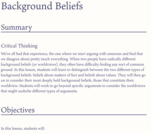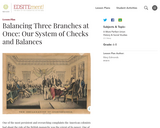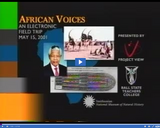
Track 6 - As One Reprise, from the musical, Spike 150: As One
- Subject:
- Arts and Humanities
- History
- Music
- Social Science
- Society and Culture
- Provider:
- Utah Education Network
- Date Added:
- 09/24/2019

Track 6 - As One Reprise, from the musical, Spike 150: As One

Track 3, Blown' Off Steam from the musical, Spike 150: As One

Track 02 - Ringin' in Our Ears, from the musical Spike 150: As One

Track 4, Stories from the soundtrack to the musical, Spike 150: As One

The title track to the soundtrack for the musical, Spike 150: As One.

This activity is designed to accompany the contextual essay “Assembling, Amplifying, and Ascending: Recent Trends Among Women in Congress, 1977–2006,” from the Women in Congress website, history.house. gov/exhibition-and-publications/wic/women-in-congress/. Students have the opportunity to learn more about the women who served in Congress from 1977 to 2006. Students are encouraged to analyze the role women Representatives and Senators played in Congress during this era, as well as the ways in which they may have changed the institution.

In this activity, students examine photographs from an Alaskan Native Tribe who converted to the Anglican faith; they look for evidence of cultural assimilation and provide an opinion as to whether or not this type of cultural assimilation is beneficial or harmful to the tribe.

Prerequisite: Students need to have studied the Dawes Act of 1887 and the breaking up of reservations. In this activity, students analyze primary resources to determine how the federal government tried to assimilate Native Americans. Online activity. Focus: Compare and contrast.

Indigenous communities in coastal Alaska are facing the impacts of climate change as rising sea levels and changing weather patterns threaten to disrupt and destroy entire villages. If coordinated relocation efforts are not successful, residents risk losing their community and their traditional lifestyle. Lesson plan with photo essay.

This Wide Angle video segment illustrates Islamic and secular elements of life in Turkey, and introduces Mustafa Kemal Ataturk, the first president of Turkey, and his reforms.

This is a great resource on what athanian democracy was like. I would probably use this as a place for primary sources. Using directly as written would be a little above 6th Grade.

This interactive map allows students to see how the attack on Pearl Harbor occurred with pictures, oral testimony, and timeline of events.

A Critical Introduction to U.S. Government and Politics
Word Count: 243127
(Note: This resource's metadata has been created automatically by reformatting and/or combining the information that the author initially provided as part of a bulk import process.)

Article looking at the choices Washington made during critical days of the Revolution. Could be used as a case study to look at washington's choices he made.

This is a teacher-created resource. It is a literacy activity that talks about the Aztec connection to Utah.

Students choose a mode of expression—e.g., writing, art or storytelling—to share theme-related ideas and feelings with a “buddy” from outside the classroom.

We've all had that experience, the one where we start arguing with someone and find that we disagree about pretty much everything. When two people have radically different background beliefs (or worldviews), they often have difficulty finding any sort of common ground. In this lesson, students will learn to distinguish between the two different types of background beliefs: beliefs about matters of fact and beliefs about values. They will then go on to consider their most deeply held background beliefs, those that constitute their worldview. Students will work to go beyond specific arguments to consider the worldviews that might underlie different types of arguments.

Baker v. Carr (1962) was a landmark case concerning re-apportionment and redistricting. The United States Supreme Court ruled that federal courts could hear and rule on cases in which plaintiffs allege that re-apportionment plans violate the Equal Protection Clause of the Fourteenth Amendment.

Learn about the checks and balances system of the three branches of the U.S. government.

Africa's dynamic culture has always been fueled by the movement of people, things, and ideas. Africans use cultural traditions as a starting point for new innovations. In friendship, conversation, daily life, and university classrooms, African artists learn traditional techniques and develop the latest ideas.